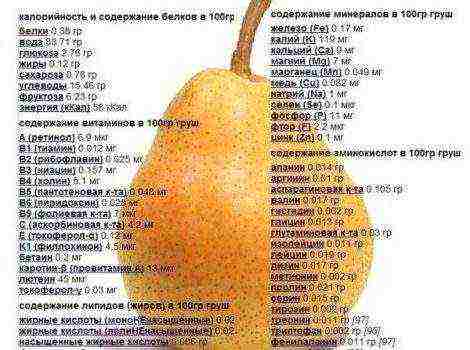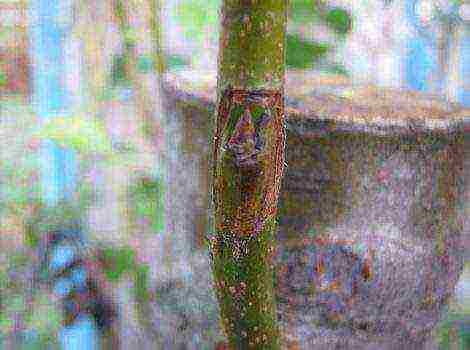Content
How to grow chestnuts from walnuts at home
Chestnuts are very beneficial for humans. Some varieties bear fruit with edible nuts, which are used for cooking.... Whether it is possible to grow a chestnut at home from a nut and how to plant it will be discussed further.
Is it possible to grow chestnuts at home
To acquire your own chestnut alley, it is not at all necessary to purchase expensive seedlings. It is possible to grow trees from a nut.
More than 30 types of chestnut trees are known, but not everything will be able to grow at home:
- Sowing chestnut - the tree is long-lived. With proper care, a tree can live for over 500 years. The height of the chestnut reaches 35 meters, the leaves are large. Chestnut inflorescences are creamy and lush. Nuts are good for food, large. The shell is soft.
- Chinese softest - fruits have high taste, are highly valued among gourmets. The tree is up to 15 meters high, the leaves are small, pubescent. Candles standing upright, of different colors.
- Japanese chestnut - differs in its growth rate. It begins to bear fruit in the third year of cultivation. Edible fruits, weighing up to 100 grams.
- Chestnut Chinese softest
- Sowing chestnut
- Japanese chestnut
When planting a chestnut in the garden, keep in mind that it gives a dense shade, and its roots are superficial. Nothing will grow under the tree at all, but nobody forbids to equip a recreation area under its branches.
In addition, the edible varieties of chestnuts should be grown away from roads, factories and factories. A better solution is a country house. The fact is that the chestnut absorbs heavy metals and all toxic wastes, fruits from the city tree are completely unsuitable for food.
During the flowering period, chestnut trees are excellent honey plants.... Honey has a slight bitterness, but is very healthy.
Which nut to choose for planting
In order to avoid mistakes in the cultivation of chestnuts, we advise you to listen to the opinion of experts and select only fallen nuts. They are used for further germination.
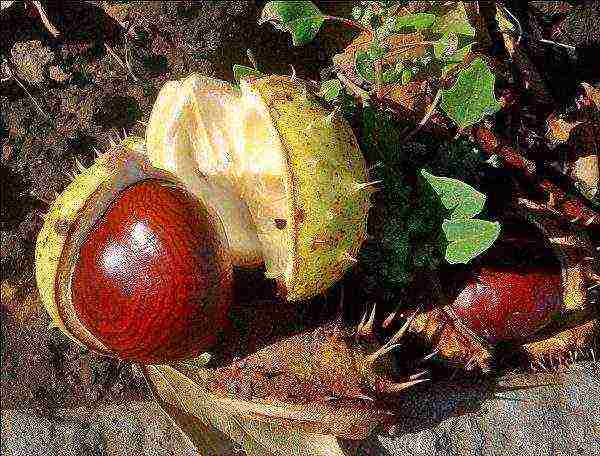
The fruits should be smooth and beautiful in appearance, without damage or soft spots.... Select firm chestnuts for planting.
It is better to start planting in the fall, after harvesting the fruits. It is not always possible to save nuts until spring without losses. They dry out and lose their germination... If this is not possible, then store the chestnuts until spring in a bag of wet sand.
Conditions for planting and growing chestnuts
The secret to successful chestnut cultivation is seed stratification. If you pick nuts in late autumn and plant them in open ground, then nature will do everything. But in room conditions, you will have to independently subject the seeds to stratification.
To do this, immediately after harvest, nuts are placed in a container with sand and put in a cool place... This could be a refrigerator shelf or basement. Experienced gardeners recommend dropping a container of nuts in the garden under the snow. There the nuts are stored until spring. A week before disembarkation, they are taken out.
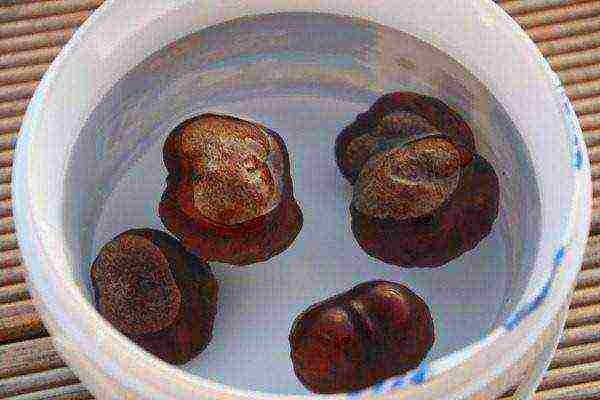
It is better to start planting nuts in late February or early March.... Before sowing, they are soaked in water for five days. The water is regularly changed so that it does not deteriorate. The shell of the nuts should soften well. This process activates the embryo and helps the sprout to germinate faster. Nuts are planted when the white sprout sprouts.
Almost any soil is suitable for germinating chestnuts. Nuts are planted immediately in separate containers, with a volume 300-500 ml... The substrate is well moistened and a seed is placed in it to a depth of 3-5 cm. The first shoots appear in 15-20 days.
Spring planting chestnuts at home is preferable:
- Seedlings growing fast and strong enough for winter.
- Seedlings good endure winter.
- The germination percentage is higher.
This method of growing chestnuts is less labor intensive.
When to transplant seedlings outdoors
Young seedlings are transplanted into open ground after the threat of night frosts has passed. As a rule, this is the end of May.
When planting in the garden, keep in mind that chestnuts are large trees. The distance between seedlings should be at least 3 meters... Only under this condition will the tree delight with a dense crown, beautiful and long flowering and tasty fruits. Any soil is suitable for planting, but black earth is best.
The planting hole should match the root system of the seedling. The earth from the hole is mixed with humus and sand in the ratio 2:1:1 and add 500 g slaked lime... Phosphorus-potassium fertilizers are added to each well. The bottom of the holes is well drained with pebbles, gravel or sand. The height of the drainage layer is 10 cm.
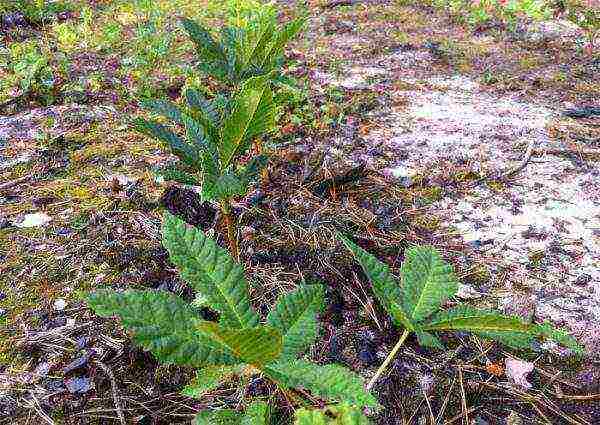
Planting seedlings is carried out carefully, trying not to damage the taproot of the plant:
- Pour the prepared soil into the hole, moisten well.
- Place a seedling and sprinkle with soil.
- They tamp the ground and water the chestnut.
For better rooting of young chestnuts cover the plant for a few days with a paper bag.
Chestnut garden care in spring and autumn
Growing a chestnut tree on your own from a nut tree is not as difficult as it seems. The main thing is to properly care for it and fence off the young seedling from the winds and animals.
Young chestnuts are fenced in with pegs and tied with a red ribbon... In the wind season, the plant is tied to a support so as not to damage the fragile trunk.
The walnut chestnut grows slowly, so a lot of patience should be taken. In the second year of cultivation, the tree will only add 20-25 cm... But already in the fifth year, with good care, it can grow before 1.5 meters... The formation of a lush crown begins in the tenth year of life. Pruning will help stimulate crown formation.
Watering a young chestnut
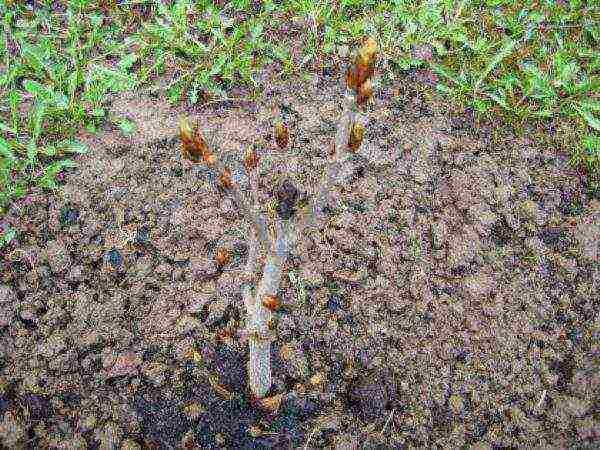
Young seedlings are regularly watered, since their root system is still weak. In the future, the chestnut is rarely watered. After watering, the soil must be mulched with humus or sawdust... Young trees require especially careful care.
Top dressing
For full-fledged fruiting, the chestnut needs additional feeding. They are held twice a year.:
- In the spring the seedling is fed with a urea solution (15g per 10 l of water) or mullein.
- In autumn bring nitroammofosku (15 grams per 10 liters of water).
Also in the soil organic matter is regularly introduced.
Preparing for winter
In autumn, young plants need shelter for the period of cold weather. With the onset of the first frost, the seedlings are mulched with a thick layer of humus or dry leaves.... This will protect the root system from freezing. Adult chestnuts do not need mulching. They are more hardy and unpretentious.
Crown formation
From the age of three, they begin to form a beautiful chestnut crown. In the spring, the seedling is cut on ¼ heights... In this case, the central conductor is shortened, and the side branches are slightly trimmed.
Further chestnut pruning is done regularly.
Difficulties in growing
Even with good care, chestnut trees are attacked by pests and diseases. This greatly complicates the cultivation of a tree and can ruin all the work done.
Plants are most often affected:
- wood mite;
- chestnut moth;
- powdery mildew.
- Chestnut miner moth
- Powdery mildew on chestnut
As a preventive measure, the tree is sprayed with disinfectants twice a month.
It's easy to recognize powdery mildew on chestnuts.... It shows up with characteristic dark or white spots on the leaves. Phosphate fertilizers can significantly reduce the risk of infection.
Chestnut trees with edible fruit are noteworthy. They are not only beautiful but also useful. With good care, seedlings will begin to bear fruit on 7-8 years landing... To avoid mistakes when planting walnut chestnuts, carefully follow the instructions and advice of experienced gardeners. Remember that chestnuts need special care at a young age.

